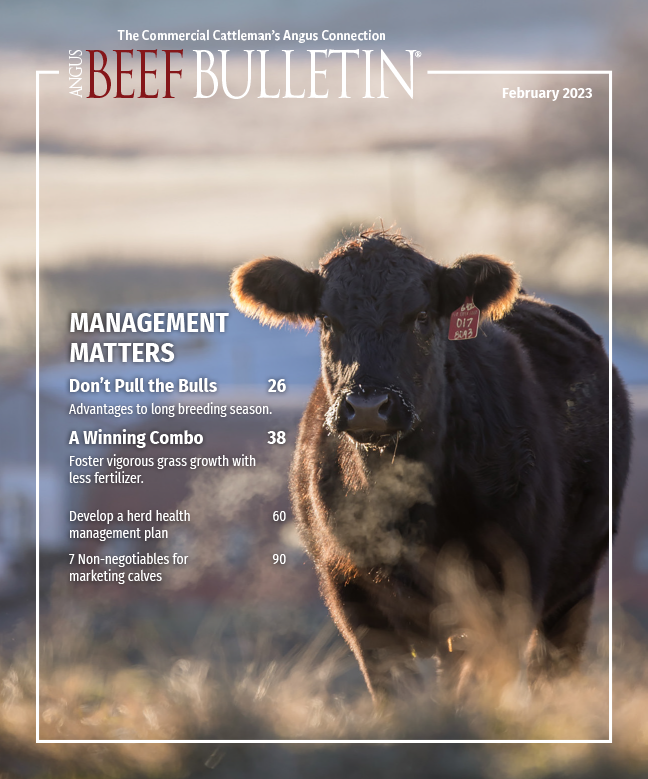
Market Closeout
A hefty dose of optimism.
I’m an optimist by nature, so I was excited to read that experts believe there is an evolutionary advantage to optimism. The advantage makes sense when you realize optimism tends to be a prerequisite for success. It is nearly impossible to create a better future if you can’t envision a better future in the first place.
With that said, I just attended the CattleFax Annual Outlook Seminar at the Cattle Industry Convention and NCBA Trade Show. It was impossible to look at the numbers without being excited about the price outlook for all cattle in the next three to four years.
Even Mother Nature seems to be cooperating. Predictions aren’t for a dramatic shift away from drought, but reports are for a transition away from La Niña, which has been wreaking havoc on a large portion of the United States from a drought perspective. It will take time to transition away from this lack of moisture, but we are transitioning.
Irrespective of what metric you look at from a supply standpoint, or what indicator you look at from a demand perspective, you are looking at a supply-and-demand scenario that hasn’t been experienced in most of our lifetimes.
Of course, there are some cautionary flags. We are starting at historically high retail price levels, and there are questions about how much further we can push prices.
Input costs are at historically high levels. Interest rates are higher, and the geopolitical landscape remains as volatile as in any time in recent decades.
Value of genetics
What really makes me optimistic is that genetics are worth more than they ever have been. The premiums for high-quality cattle are increasing, and the opportunities to differentiate our cattle and receive premiums for calves with superior genetic merit are real and tangible with the AngusLinkSM Genetic Merit Scorecard® (GMS).
It is easy to make the case that, from a cow-calf perspective, everyone is going to enjoy an extended period of profitability and higher prices. While this is great news, it doesn’t change the fact that our marketplace is rapidly evolving, premiums are expected to continue to be large at these higher price levels, and competition is growing.
When you look at quality grades and carcass weights after the droughts of 2002 and 2012, we saw a bigger-than-trendline increase in both quality grade and carcass weight. This increase occurred because poorer cows were culled and replaced with better genetics. I would expect a similar trend to occur this time as we enter back into an expansion mode.
Liquidation tends to accelerate genetic progress, while expansion tends to slow it. As we move into the expansion phase of this next cattle cycle, and prices moderate, the quality of cattle will be much higher. The bar will be elevated, meaning cattlemen will have to focus on genetic improvement to remain competitive.
At the same time, as we enter into the next expansion phase, both premiums and discounts will increase as buyers have more leverage to differentiate based on quality. History tells us these periods of historically high prices not only lead to moderation in prices, but that stronger market signals will be sent as we enter expansion mode.
From a producer perspective, these higher prices are also a signal that we have a relatively short period of time to prepare for the changes that are coming. Great prices have the tendency to fool producers into thinking that everything is good and both the rate of change and level of competition will be steeper on the backside of expansion.
An optimist will use these next couple of years of record prices not only to bank some significant profits, but to position themselves for a bright but ultra-competitive future.
Editor’s note: Troy Marshall is director of commercial industry relations for the American Angus Association.

